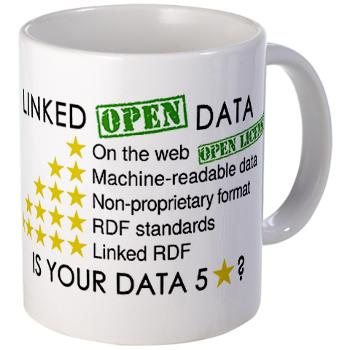Bert Bos | La plateforme Web
● ● ● ● ● ● ● ● ● ● ● ● ● ● ● ● ● ● ● ● ● ● ● ● ● ● ● ● ● ● ● ● ●
To view: switch to full screen
(With Javascript: press A)

W3C Days 2012
Rabat, Maroc
8 novembre 2012
Based on original slides by Phil Archer <phila@w3.org>
● ● ● ● ● ● ● ● ● ● ● ● ● ● ● ● ● ● ● ● ● ● ● ● ● ● ● ● ● ● ● ● ●
● ● ● ● ● ● ● ● ● ● ● ● ● ● ● ● ● ● ● ● ● ● ● ● ● ● ● ● ● ● ● ● ●

Here is a picture.
● ● ● ● ● ● ● ● ● ● ● ● ● ● ● ● ● ● ● ● ● ● ● ● ● ● ● ● ● ● ● ● ●

Here is a picture.
Of Albert Einstein
● ● ● ● ● ● ● ● ● ● ● ● ● ● ● ● ● ● ● ● ● ● ● ● ● ● ● ● ● ● ● ● ●

Here is a picture
Of Albert Einstein
And his famous equation: e=mc2
● ● ● ● ● ● ● ● ● ● ● ● ● ● ● ● ● ● ● ● ● ● ● ● ● ● ● ● ● ● ● ● ●

Here is a picture
Of Albert Einstein
And his famous equation: e=mc2
Actually, it's a picture of a sculpture of Albert Einstein
● ● ● ● ● ● ● ● ● ● ● ● ● ● ● ● ● ● ● ● ● ● ● ● ● ● ● ● ● ● ● ● ●

Here is a picture
Of Albert Einstein
And his famous equation: e=mc2
Actually, it's a picture of a sculpture of Albert Einstein
Find out more...



● ● ● ● ● ● ● ● ● ● ● ● ● ● ● ● ● ● ● ● ● ● ● ● ● ● ● ● ● ● ● ● ●
Wouldn't it be great if your computer could do all that looking up for you?
● ● ● ● ● ● ● ● ● ● ● ● ● ● ● ● ● ● ● ● ● ● ● ● ● ● ● ● ● ● ● ● ●

http://www.w3.org/2012/Talks/0710_phila_bcs/einstein.jpg is a http://en.wikipedia.org/wiki/Image.
Of http://en.wikipedia.org/wiki/Albert_Einstein
And his famous equation: http://en.wikipedia.org/wiki/Mass-energy_equivalence
Actually, it's a http://en.wikipedia.org/wiki/Image of a http://en.wikipedia.org/wiki/Sculpture of http://en.wikipedia.org/wiki/Albert_einstein
● ● ● ● ● ● ● ● ● ● ● ● ● ● ● ● ● ● ● ● ● ● ● ● ● ● ● ● ● ● ● ● ●
Previous data model is an over-simplification.
HTTP GET on http://en.wikipedia.org/wiki/Albert_Einstein returns:
200 OK Cache-Control: private, s-maxage=0, max-age=0, must-revalidate Connection: close Date: Sat, 07 Jul 2012 09:10:07 GMT Server: Apache Vary: Accept-Encoding,Cookie Content-Language: en Content-Length: 351336 Content-Type: text/html; charset=UTF-8 Expires: Thu, 01 Jan 1970 00:00:00 GMT Last-Modified: Fri, 06 Jul 2012 15:21:23 GMT
● ● ● ● ● ● ● ● ● ● ● ● ● ● ● ● ● ● ● ● ● ● ● ● ● ● ● ● ● ● ● ● ●
 Hence DBpedia: For each Wikipedia entry, creates two URIs:
Hence DBpedia: For each Wikipedia entry, creates two URIs:
http://dbpedia.org/resource/Albert_Einstein
http://dbpedia.org/page/Albert_Einstein
URIs resolved through HTTP content negotiation and 303 redirection.
Source of long-running debate (“httpRange-14”), that we will not get into today. See e.g., Jeni Tennison's blog post
● ● ● ● ● ● ● ● ● ● ● ● ● ● ● ● ● ● ● ● ● ● ● ● ● ● ● ● ● ● ● ● ●
<rdf:Description rdf:about="http://dbpedia.org/resource/Le%C3%B3_Szil%C3%A1rd">
<dbpedia-owl:academicAdvisor rdf:resource="http://dbpedia.org/resource/Albert_Einstein" />
<dbpprop:academicAdvisors rdf:resource="http://dbpedia.org/resource/Albert_Einstein" />
</rdf:Description>
<rdf:Description rdf:about="http://dbpedia.org/resource/Stephen_Hawking">
<dbpedia-owl:influencedBy rdf:resource="http://dbpedia.org/resource/Albert_Einstein" />
<dbpprop:influences rdf:resource="http://dbpedia.org/resource/Albert_Einstein" />
</rdf:Description>
<rdf:Description rdf:about="http://dbpedia.org/resource/Nathan_Rosen">
<dbpedia-owl:academicAdvisor rdf:resource="http://dbpedia.org/resource/Albert_Einstein" />
<dbpprop:academicAdvisors rdf:resource="http://dbpedia.org/resource/Albert_Einstein" />
</rdf:Description>
<rdf:Description rdf:about="http://dbpedia.org/resource/Einstein_%28disambiguation%29">
<dbpedia-owl:wikiPageDisambiguates rdf:resource="http://dbpedia.org/resource/Albert_Einstein" />
</rdf:Description>
● ● ● ● ● ● ● ● ● ● ● ● ● ● ● ● ● ● ● ● ● ● ● ● ● ● ● ● ● ● ● ● ●
dbpedia:Albert_Einstein rdfs:comment "Albert Einstein was a German-born theoretical physicist who developed the theory of general relativity, effecting a revolution in physics. For this achievement, Einstein is often regarded as the father of modern physics and one of the most prolific intellects in human history. He received the 1921 Nobel Prize in Physics \"for his services to theoretical physics, and especially for his discovery of the law of the photoelectric effect\"."@en , "Albert Einstein est un physicien th\u00E9oricien d'origine juive qui fut successivement allemand, puis apatride (1896), suisse (1901), et enfin helv\u00E9tico-am\u00E9ricain (1940). Il publie sa th\u00E9orie de la relativit\u00E9 restreinte en 1905, et une th\u00E9orie de la gravitation dite relativit\u00E9 g\u00E9n\u00E9rale en 1915. Il contribue largement au d\u00E9veloppement de la m\u00E9canique quantique et de la cosmologie, et re\u00E7oit le prix Nobel de physique de 1921 pour son explication de l\u2019effet photo\u00E9lectrique."@fr .
This is the same document, but in Turtle (which expresses RDF in a non-XML format, sometimes easier to read).
● ● ● ● ● ● ● ● ● ● ● ● ● ● ● ● ● ● ● ● ● ● ● ● ● ● ● ● ● ● ● ● ●
303 See Other Connection: close Date: Sat, 07 Jul 2012 10:03:27 GMT Accept-Ranges: bytes Location: http://dbpedia.org/page/Albert_Einstein Server: Virtuoso/06.04.3132 (Linux) x86_64-generic-linux-glibc25-64 VDB Content-Length: 0 …
And if you retrieve the same DBpedia URL asking for an HTML version, you'll get the above, which is a redirect to the Wikipedia article. (The 303 is normally used by a server to indicate to a client that a POST request should be replaced by a GET request. As a convention, semantic Web people use it to indicate that the redirect is to a description of the requested object, rather than the object itself.
● ● ● ● ● ● ● ● ● ● ● ● ● ● ● ● ● ● ● ● ● ● ● ● ● ● ● ● ● ● ● ● ●
● ● ● ● ● ● ● ● ● ● ● ● ● ● ● ● ● ● ● ● ● ● ● ● ● ● ● ● ● ● ● ● ●
● ● ● ● ● ● ● ● ● ● ● ● ● ● ● ● ● ● ● ● ● ● ● ● ● ● ● ● ● ● ● ● ●
Public sector holds a lot of data:
● ● ● ● ● ● ● ● ● ● ● ● ● ● ● ● ● ● ● ● ● ● ● ● ● ● ● ● ● ● ● ● ●
Most Open Government Data released as CSV (source)
Most apps are Web based and visualise a single static dataset.
± 90% of the apps surveyed combine OGD with maps, mainly Google Maps and Open Street Map.
● ● ● ● ● ● ● ● ● ● ● ● ● ● ● ● ● ● ● ● ● ● ● ● ● ● ● ● ● ● ● ● ●
Many challenges remain:
The Lichfield District Council in the UK gives access to data linked to geographic locations.
The England and Wales government's collected data about water quality at beaches around the coast.
● ● ● ● ● ● ● ● ● ● ● ● ● ● ● ● ● ● ● ● ● ● ● ● ● ● ● ● ● ● ● ● ●
● ● ● ● ● ● ● ● ● ● ● ● ● ● ● ● ● ● ● ● ● ● ● ● ● ● ● ● ● ● ● ● ●
● ● ● ● ● ● ● ● ● ● ● ● ● ● ● ● ● ● ● ● ● ● ● ● ● ● ● ● ● ● ● ● ●

★ Available on the web (whatever format) but with an open licence, to be Open Data
★★ machine-readable structured data (e.g. excel instead of image scan of a table)
★★★ as (2) plus non-proprietary format (e.g. CSV instead of excel)
● ● ● ● ● ● ● ● ● ● ● ● ● ● ● ● ● ● ● ● ● ● ● ● ● ● ● ● ● ● ● ● ●

★★★★ All the above plus, Use open standards from W3C (RDF and SPARQL) to identify things, so that people can point at your stuff
★★★★★ All the above, plus: Link your data to other people’s data to provide context
Originally developed by Tim Berners-Lee
● ● ● ● ● ● ● ● ● ● ● ● ● ● ● ● ● ● ● ● ● ● ● ● ● ● ● ● ● ● ● ● ●
www.w3.org/Talks/2012/1108-LOD-Rabat
![]()
To Lead the Web to its full potential
To Anticipate the Trends
To Increase your company value
Join W3C
http://www.w3.org/Consortium/join
or contact: Bernard Gidon <bgidon@w3.org>
Bert Bos <bert@w3.org>
GPG fingerprint: 7744 0204 52A5 14D9 147D
2A13 2D7A E420 184B 5BA4
If you do an HTTP request on the DBpedia URL for Albert Einstein, asking for the RDF version (with the HTTP Accept header), you'll get this RDF document.